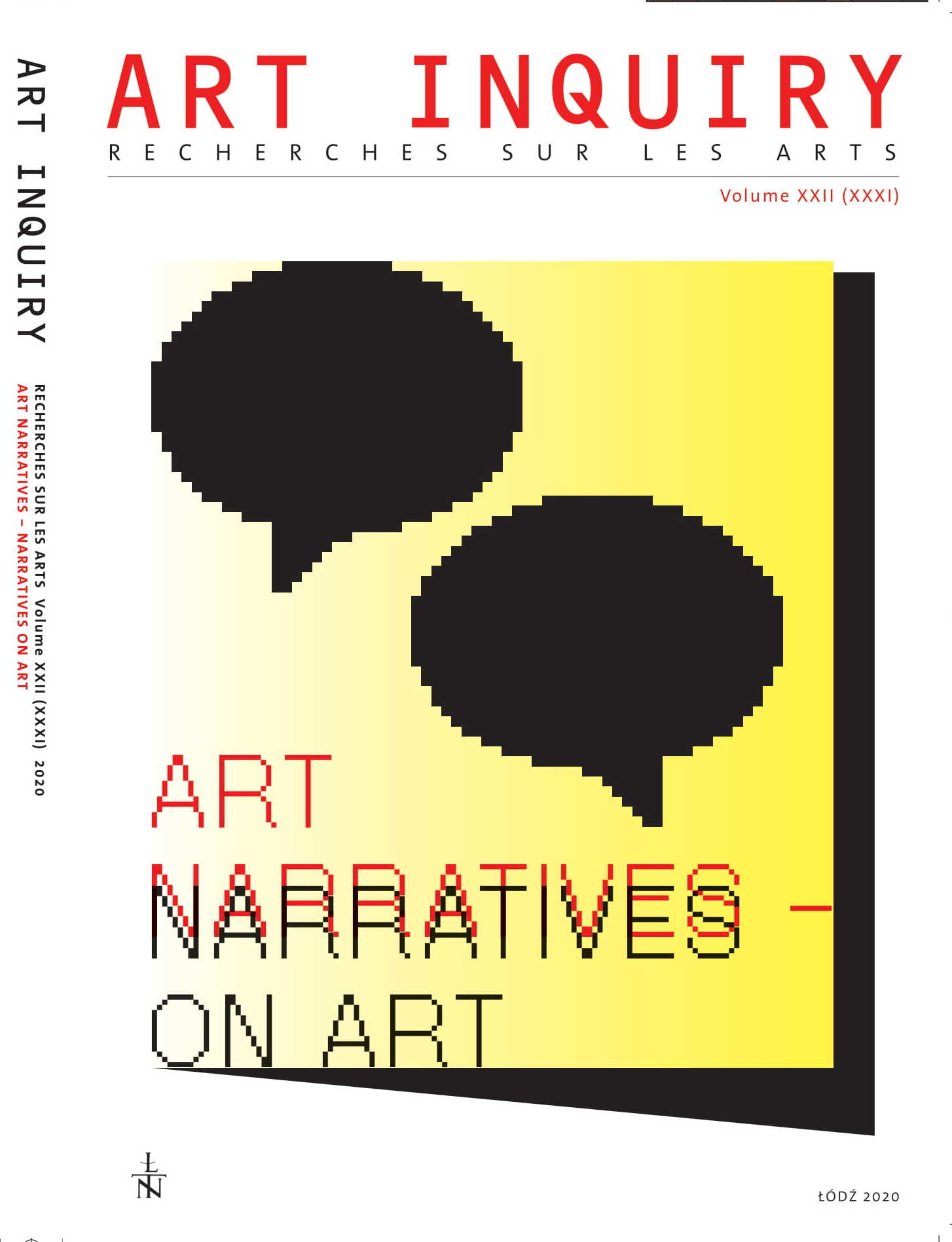The painter as a prophet turned towards the past
The painter as a prophet turned towards the past
Author(s): Agnė KulbytėSubject(s): Visual Arts
Published by: Łódzkie Towarzystwo Naukowe
Keywords: romanticism; postromanticism; memory; representation; narrative; painting; historicity
Summary/Abstract: This article deals with the problem of recognition of the romantic model of memory in contemporary art and theory, which emerged after the so-called “narrative turn”. The ambiguous philosophical statement by Friedrich Schlegel is taken as a key-phrase for the analysis. It unlocks the character of the artist’s (painter’s) visions and ambitions settled at the beginning of the 19th century. A constitutive role of active memorization in the process of romantic creativity required commemoration to be the central aim of artistic expression. It is also a rudiment of popular contemporary artistic strategies. Imaginative narratives and subjective myths spread in numerous, inertial, visual metaphors. Are they overcoming the romantic intention or extending it? Following the insights of Andreas Huyssen, Franklin Rudolf Ankersmit and other researches, this analysis tries to touch upon a huge transformation in the understanding of memory and emphasises that there are important abandoned aspects close to the highly psychologized version of romantic memory, which lie in the philosophical-theological interpretations of romanticism. They do not allow us to reduce memory to a “theme” or an “object” of an artistic project. The author highlights the influence of the power of memory upon the creation of form and the inner anticipation of meanings. Without this positive and idealized understanding of memory (emphasized by romantic philosophies), pictorial expression would lose its uniqueness.
Journal: Art Inquiry
- Issue Year: 2020
- Issue No: 22
- Page Range: 39-55
- Page Count: 17
- Language: English

